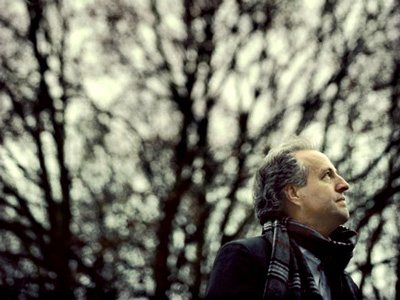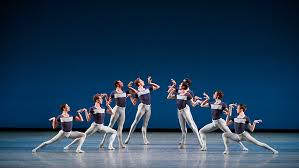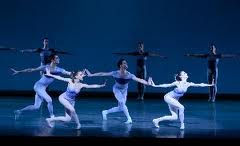By Sedgwick Clark
My introduction to Italian conductor Gianandrea Noseda was his emotionally devastating performance of Britten’s War Requiem with the London Symphony Orchestra at Lincoln Center in October 2011. Since then I’ve made a point of hearing as many of his New York concerts as possible. He has been hereabouts for the past three months, leading a glowing, ambitious new edition of Borodin’s unfinished Prince Igor and a warmly expressive Andrea Chénier at the Met, a revelatory Israel Philharmonic tour concert on March 29 at NJPAC in Newark, and Saint-Saëns’s Third Symphony (“Organ”) with the Philadelphia Orchestra on home territory in Verizon Hall on April 13, which I happily heard for the first time with a genuine pipe organ.
Let’s deal with the revelation straight off—the first time in my experience that the Israel Philharmonic, of which Noseda is principal guest conductor, has sounded like a decent orchestra. What is an orchestra supposed to do: play together, right? For at least 35 years, to my ears, the IPO has sounded like an orchestra at odds with itself—a group of aspirant soloists, to be kind; or as a fellow music lover used to say, a ragtag bunch of gypsies. With coarse, arid tone besides. Wonder of wonders, Noseda had these musicians playing an all-French program not only precisely but also beautifully in NJPAC’s warm, clear acoustics.
I arrived late for Fauré’s Pelléas et Mélisande suite (an indication, perhaps, of my trepidation at hearing the IPO after years of avoidance). But Ravel’s Ma Mère l’Oye (Mother Goose) suite and the second suite from Daphnis et Chloé instantly put me at ease with their excellent ensemble, transparent textures, and tonal beauty. The IPO’s heretofore unruly strings positively shimmered under their conductor’s leadership. Now, Maestro Noseda, how about Ravel’s complete ballet scores of these works with the Israelis?
Pungent woodwinds and dynamic timpani were only some of the welcome details in Noseda’s Berlioz Symphonie fantastique. He took the first-movement repeat but not the usually ignored one in the brief March to the Scaffold; I would have loved the repeat because of the delightfully grotesque blat of the trombone (or was it an actual opheclide, as Berlioz requests?). I heartily approve that he included the optional cornet in the second movement, but I thought the player too reticent to fully register the cackling ostinato rhythms and military color of the instrument. The balance was the same on a live recording Noseda made with the IPO in January, released by Helicon in time for the tour, so it was evidently what he intended. If the malevolence of the Witches’ Sabbath finale seemed a bit tame to me, I nevertheless found much instrumental detail to savor. Noseda’s accomplishments with this orchestra remain amazing.
Two weeks later he was on the podium of one of the world’s great ensembles, the Philadelphia Orchestra, leading Saint-Saëns’s “Organ” Symphony. Astonishingly, neither of New York’s major concert halls has a real organ. One must travel to Philly or Boston to hear one in a proper-size hall. Noseda certainly has the measure of this glorious Romantic masterwork. Moreover, no recording ever made, in any living or listening room I know, no matter how capacious and acoustically treated, can beat the Verizon Hall pipe organ’s fortissimo outburst in the flesh.
In the program’s first half, Noseda led Symphonic Fragments from the opera La donna serpente by Alfredo Casella. The conductor has performed and recorded works by Casella and other lesser-known 20th-century Italian composers. The music is tuneful and pleasant when so expertly performed. But Respighi he is not, except when parts of Fountains of Rome creep into the beginning of the second fragment.
Canadian violinist James Ehnes’s reputation for beautiful tone was vividly on display in Prokofiev’s Second Violin Concerto, a lyrical work contemporaneous with Romeo and Juliet. Where some fiddlers find traces of diablerie and sarcasm from the composer’s earlier style, Ehnes emphasized the creamy melodies and long line to luscious effect, ideally accompanied by Noseda. The two have recorded all of Prokofiev’s violin music for Chandos.
Noseda will conduct Beethoven’s Ninth Symphony (“Choral”) in New York at the Mostly Mozart Festival in August, and on December 7 at Carnegie Hall he will lead the Teatro Regio Torino, of which he has been music director since 2007, in a concert performance of Rossini’s William Tell.
Looking Forward
My week’s scheduled concerts (8:00 p.m. unless otherwise noted):
4/21 Symphony Space at 7:30. Cutting Edge Concerts/Victoria Bond. Blue Streak Ensemble. Robert Paterson: Sextet. Margaret Brouwer: Inner Voices (premiere). Victoria Bond: Clara (excerpts). David T. Little: descanso (waiting). Jonathan Tunick: Trio (premiere). Margaret Brouwer: Shattered Glass (N.Y. premiere).
4/23 Zankel Hall at 6:00. Tuvan Throat Singing. Pärt: Passio.

![28165_256[1]](http://www.musicalamerica.com/mablogs/wp-content/uploads/2014/04/28165_2561-150x150.jpg)






Gergiev, Munich’s Mistake
April 9th, 2014By ANDREW POWELL
Published: April 9, 2014
MUNICH — Not a week goes by here now without media mention of Valery Gergiev. The musical friend of Vladimir Putin and, more to the point, high-profile employee-to-be of the City of Munich inspires comment even in modest suburban newspapers. Many want his alarmingly long contract (2015–20) shredded.
But the Russian maestro was already a rotten choice as Chefdirigent of the tax-payer-funded, city-run Munich Philharmonic before Putin upset Pink List politicians over human rights and the Green Party over Crimea.
His repertory limitations, his work habits and his first loyalties all portend a discordant, creatively stunted tenure during which Munich, despite its €800,000-a-year* wage, has no hope of being the artist’s top priority. If not shredded, the contract of Feb. 2013 should certainly be adjusted.
Gergiev is globally known from his base at St Petersburg’s Mariinsky Theater, where he operates a network of répétiteurs and conducting assistants who extend brand “Gergiev” beyond the physical and temporal limits of one person.
Seven days ago, for instance, he entered a principal guest conductor agreement (pictured) with Astana Opera, the expensively housed company of Nursultan Nazarbayev in the flat and flashy Kazakh capital.
Munich’s old and Astana’s new money follows Gergiev earnings at the London Symphony Orchestra, where his stint as principal conductor (2007–15) resembles good preparation for the job here.
But London’s one-night, one-program pattern suits the Russian’s lickety-split scheduling better than Munich’s (American-style) weekly program iterations. Example: he is this week able to dart to New York for a Strauss concert between two different LSO Scriabin programs three days apart.
As one MPhil insider earnestly phrased it last December, peripatetic Gergiev “must reinvent himself” so that he can stay in one place, with one program and one group of musicians, for a whole workweek, build partnerships through rehearsals he himself leads, and mine the interpretive depths.
Good luck with that. And the reinventing would need to extend to repertory: Munich concertgoers enjoy their Slavic diversions but expect passionate leadership in Beethoven, Brahms and Bruckner. Alas, in 25 years as a star, Gergiev has acquired no reputation in these composers. Ditto for Haydn, Mozart, Schubert, Schumann and Mendelssohn.
“It’s political,” everyone says, when asked why Gergiev was chosen. They mean he was chosen by city politicians — not friends of Putin, of course, but people whose collective knowledge and consensus thinking permit little beyond the purchase of a big name, which Gergiev undeniably is.
In their wisdom, in 2009, they “lost” the MPhil’s hot-property Generalmusikdirektor Christian Thielemann, and followed up in 2010 by replacing him with the jaded Lorin Maazel (for 2012–15). Decline has followed.
The politicians do not decide unaided, however. A consulting board called the Philharmonische Rat liaises between the orchestra’s Intendant Paul Müller and Munich’s city council, which approves budgets and major contracts. The Rat includes councilors, orchestra members, Müller, and Hans-Georg Küppers, the city’s Kulturreferent. If nothing else, processes are peaceful. The recent difficulties in Minneapolis and San Diego cannot be imagined here.
Ironically, while Rat members can speak freely, Gergiev is expected to constrain his speech — not weigh in on matters like Crimea that needn’t concern a Moscow-born Ossetian based in St Petersburg — and acquire the diplomatic tact of a City of Munich employee, a world-roaming cultural ambassador whose every move and view will reflect on Munich, Bavaria and Germany.
Predictably he hasn’t. By hailing the Crimea change, even in his current status as an MPhil guest, he may have done more to curtail his Munich future than any problem of scheduling or repertory weakness could have.
The Green Party on Mar. 27 forced instructions to Küppers and Müller: chat with the maestro during his next visit, bitte, and illuminate the boundary between free speech and employee discretion.
They can try. Gergiev is in town next month with his beloved Mariinsky Orchestra. More productive, though, would be a chat that dilutes the publicly signed Chefdirigent deal into a guesting plan like Astana’s. Time remains on Maazel’s contract to research and court a more suitable replacement, allowing Gergiev to remain Gergiev, and Munich to savor the scores he leads best. Without the negative attention.
[*The salary reportedly paid to Christian Thielemann, whose title indicated a slightly loftier position. The incumbent, Lorin Maazel, is Chefdirigent, as was James Levine before Thielemann.]
Photo © Astana Opera
Related posts:
Jansons! Petrenko! Gergiev!
Gergiev Undissuaded
Maestro, 62, Outruns Players
Concert Hall Design Chosen
Stravinsky On Autopilot
Tags: Astana Opera, Christian Thielemann, Commentary, Green Party, Hans-Georg Küppers, London Symphony Orchestra, Lorin Maazel, Mariinsky Orchestra, Mariinsky Theater, München, Münchner Philharmoniker, Munich, Munich Philharmonic, Nursultan Nazarbayev, Paul Müller, Pink List, St Petersburg, Valery Gergiev, Vladimir Putin
Posted in Munich Times | Comments Closed